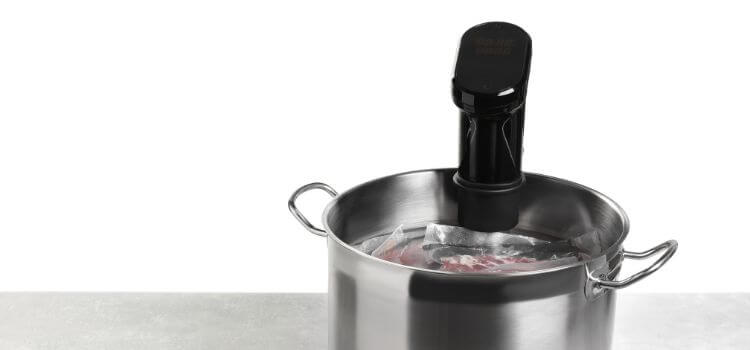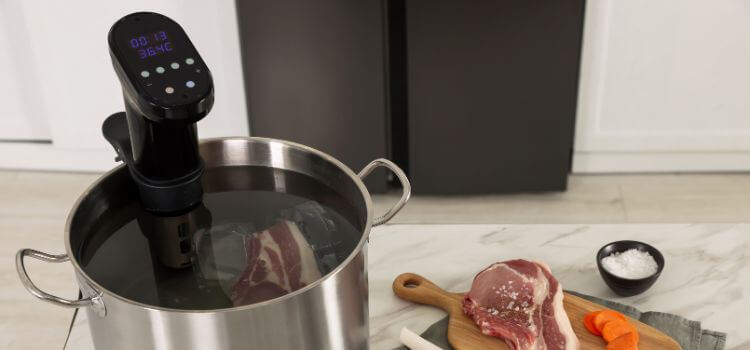As an Amazon Associate, I earn from qualifying purchases

Sous vide cooking has revolutionized the way we prepare meals, offering precise temperature control to achieve perfect results every time. However, to ensure your sous vide equipment continues to perform at its best, regular maintenance and cleaning are crucial. Just like any other kitchen appliance, a clean sous vide machine not only extends its lifespan but also ensures food safety and high-quality cooking results.
Neglecting your sous vide device can lead to mineral buildup, reduced efficiency, and even contamination risks. This guide will walk you through the essential steps and practices needed to keep your sous vide machine in excellent condition.
Tools and Materials Needed for Cleaning
Before diving into the cleaning process, gather all necessary tools and materials. Having everything at hand will make the process smoother and more efficient. Here’s what you’ll need:
- Soft Cloths: Use these to wipe down the exterior and delicate parts of the machine to avoid scratches.
- Mild Detergents: Opt for non-abrasive, food-safe cleaning agents that won’t harm the machine’s components.
- Brushes: Small, flexible brushes can help reach into tight spots and components like the circulator.
- Vinegar: A natural descaling agent, vinegar is excellent for removing mineral deposits without causing damage.
- Optional Descaling Solutions: These are specially formulated to tackle stubborn mineral buildup if vinegar doesn’t suffice.
Step-by-Step Guide on Cleaning the Sous Vide Machine
- Unplugging and Disassembling the Machine Safely: Always start by unplugging the device to prevent any electrical hazards. Carefully disassemble parts as per the manufacturer’s instructions, ensuring you can access each component that requires cleaning.
- Cleaning the Heating Element and Circulator: Use mild detergent mixed with water to gently scrub the heating element and circulator. A soft brush can help remove any stuck-on residues. Rinse thoroughly to ensure no soap residue remains, which could affect future cooking.
- Descaling the Machine: If you notice any mineral buildup, use vinegar or a commercial descaling solution. Fill a container with the descaling solution and run the sous vide machine as you would when cooking (without any food, of course), allowing the solution to circulate and break down deposits.
- Rinsing and Drying All Components Thoroughly: After cleaning, it’s vital to rinse every component with clean water to remove any cleaning solutions. Dry all parts completely with a soft cloth to prevent moisture accumulation, which can lead to mold or mildew.
- Reassembly: Once all components are dry, carefully reassemble the machine, ensuring all parts are correctly aligned and secure.
Tips for Maintaining the Equipment in Good Condition

- Regular Cleaning Schedule Recommendations: Clean your sous vide machine after every use, especially if you regularly cook proteins, which can release fats and juices that adhere to the machine.
- Safe Storage Practices: Store your sous vide equipment in a dry, cool place to avoid damage from moisture or heat. Use covers or cases to protect it from dust and other contaminants.
- Periodic Checks for Wear and Tear: Regularly inspect your sous vide device for signs of wear, such as frayed cords or loose components. Address these issues promptly to maintain the machine’s efficiency and safety.
Common Cleaning Mistakes to Avoid
- Using Harsh Chemicals or Abrasive Sponges: These can scratch or damage the delicate surfaces and components of your sous vide machine, leading to reduced performance.
- Neglecting to Clean and Descale Regularly: Failing to maintain a regular cleaning schedule can result in stubborn buildup, affecting the machine’s heating efficiency and potentially contaminating your food.
- Incorrect Reassembly: Ensure you follow the manufacturer’s instructions for reassembly. Misaligned parts can cause the machine to malfunction or even break.
Conclusion
Proper cleaning and maintenance of your sous vide equipment are essential for ensuring its longevity and your culinary success. By following the outlined steps and tips, you can enjoy consistently safe and delicious meals. Regular cleaning not only keeps your machine in top shape but also enhances your overall sous vide experience.
For further guidance and tips, consider joining sous vide communities where enthusiasts share insights and support. Happy cooking!
FAQ
How do you clean the inside of a Joule?
To clean the inside of a Joule, fill a container with a 1:1 solution of water and vinegar. Immerse the Joule and run it at 140°F for about an hour. This helps dissolve mineral deposits. Rinse thoroughly with clean water afterward.
How do you sterilize sous vide?
To sterilize your sous vide, fill a large container with water and add white vinegar. Heat the water to a high temperature (at least 160°F) and let it circulate for 30 minutes. This process effectively kills bacteria and cleans the system.
How to clean sous vide hard water?
Remove hard water stains by filling a pot with equal parts water and vinegar. Submerge the sous vide machine and run it at 140°F for 30 minutes. This helps dissolve mineral deposits. Rinse well with clean water to remove any vinegar residue.
As an Amazon Associate, I earn from qualifying purchases